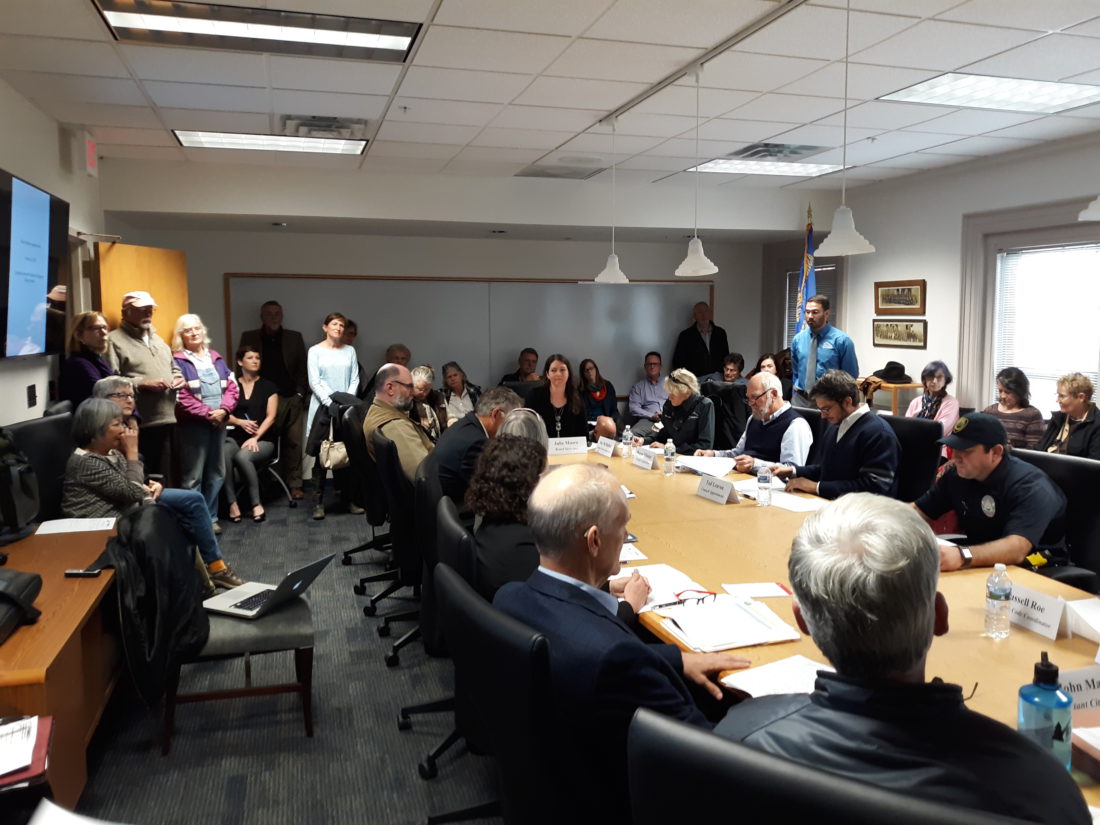“I’ve never seen this many people in the room before,” said Noise Ordinance Appeals Board member Tod Leaven, as more than 40 attendees spilled out of the Chief’s Conference Room at the Asheville Police Department on Oct. 25. But the outsized headcount was far from the only unusual aspect of the meeting: The board, normally tasked with resolving quotidian complaints such as barking dogs and overly loud music, faced the complex issue of mechanical noise from Mission Hospital.
Reb Haizlip, an institutional architect representing the Kenilworth area, claimed that Mission leaders have “willfully and knowingly” refused to fix sources of noise that greatly disrupt quality of life for him and his neighbors. (See “Sound health,” Xpress, Sept. 26, avl.mx/5en). But Rick Daniels, an attorney representing the hospital, argued that Mission had already taken many steps to address the noise and that current levels failed “by a large margin” to violate the noise ordinance.
Tensions flared early on as the Kenilworth residents bristled at the procedures of the appeals board, which differ from the free-form comment of City Council meetings many were familiar with. Because the board conducts quasi-judicial hearings, testimony and evidence must be presented in a way similar to that in a court of law, and only expert witnesses may comment on specialized matters such as property values and acoustic measurements.
“We don’t know the rules, regulations, bylaws and protocols of this meeting. But we have something that we want to tell you,” Haizlip said. “Let us do this the only way we know how, because it’s the way we rehearsed it, it’s the way we scripted it, and we’re not professionals. We want to tell our story.”
After Mission objected to this request, the board proceeded to conduct business as usual. Haizlip introduced as evidence recordings of noise from the chiller energy plant at the hospital’s St. Joseph campus, which he said points directly toward Kenilworth, and claimed that the sound levels exceeded World Health Organization recommendations for neighborhoods at night.
Daniels then extensively cross-examined Haizlip’s testimony. Among other points, he listed Mission’s noise abatement actions since Kenilworth filed its first noise complaint in 2017, noted that the WHO guidelines Haizlip cited were developed for Europe rather than the United States and introduced an email in which Haizlip said noise levels on a particular Kenilworth street were “tolerable.”
Toward the end of the cross-examination, Daniels embarked on a personal line of attack apparently intended to call into question whether Haizlip is a “reasonable person of normal sensitivity,” the standard for a complainant mentioned in Asheville’s noise ordinance. He asked about Haizlip’s career as an architect of museums and libraries — “sanctuary-type places” — and the “Zen garden” present in his backyard. Daniels did not respond to Xpress when asked to confirm the purpose of these questions and declined to share how long his legal team had spent preparing for the hearing.
The Kenilworth residents had prepared multiple additional witnesses, but they had no opportunity to call them. Following a lengthy recess, Daniels and Sean Devereux, a lawyer for the neighborhood, returned to announce that the two parties would continue negotiations outside the appeals board process. However, the residents did not formally withdraw their complaint and could return to the board at a later date.
Both attorneys, Devereux revealed, happen to live in Kenilworth. But Daniels, he quipped, “lives at the quiet end.”




It’s just not that loud. You live within city limits. If you wanted something quiet, then move to the county. However, be prepared to hear gun shots in the county, because that’s how we roll.